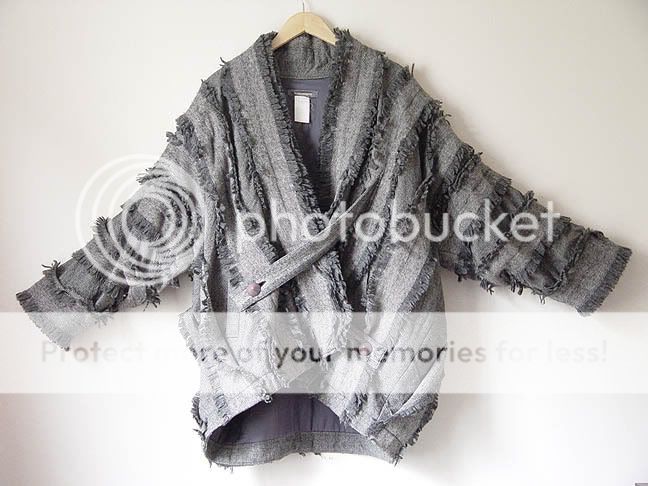ReFUSING FASHION: REI KAWAKUBO
February 8 through April 20, 2008
One of the most elusive fashion designers in the world, Rei Kawakubo of Japan, is known for remaking the forms of clothes. Her sweaters full of holes, jackets with only one sleeve and dresses that are part dress and part pants are unique, yet always wearable. She says she wants to "design clothes that have never yet existed." Her innovative fashion, unique methods of fabrication and collaborations with artists working in many different fields including the great modern choreographer Merce Cunningham, will be explored in a unique installation of her work at MOCAD. The exhibition will include over 40 key garments, costumes from and film of the Cunningham performance, photographs, runway footage and ephemera.
The exhibition ReFUSING FASHION: REI KAWAKUBO aims to present a view of Kawakubo's work as a series of interventions and dis-ruptions in the arena of style and fashion: whether her work is thought of as anti-fashion in the world of fashion, or of ugliness and clumsiness in a system classically devoted to good taste, Kawakubo's work is a constant process of renewal of vocabulary and thinking.
Rei Kawakubo (b. 1942), established the high fashion house Comme des Garçons in Tokyo in 1973. Kawakubo's concepts originate from her education in fine arts and literature rather than a formal fashion design training, and incorporate elements from the famed Fruits subculture of the Harajuko district of Tokyo. Driven by concepts, she is known for conveying her ideas verbally to her patternmakers to interpret. Kawakubo is considered a key figure in re-defining sexual identity in new terms of feminity, and is often discussed in the company of such figures as Coco Chanel, Elsa Shiaparelli, and Vivienne Westwood. With the introduction of her line in Paris in 1981, Kawakubo created a sensation with her androgynous and innovative design, and solidified her stature as one of the three major avant-garde designers from Japan, alongside Issey Miyake and Yohji Yamamoto.
From the stunning architectural interiors of her stores to the provocative makeup and styling of her models on the runway, Kawakubo has consistently managed to challenge conventions with each facet of her presentation. Kawakubo's broad-based design practice has included collaborations across genres, including architects and artists such as Steven Meisel, Gilbert and George, Francesco Clemente, Philip Johnson, Julian Schnabel and others. Her designs have inspired a generation of new designers including such luminaries as Martin Margiela, Ann Demeulemeester, Helmut Lang, and her own protégé Junya Watanabe.












